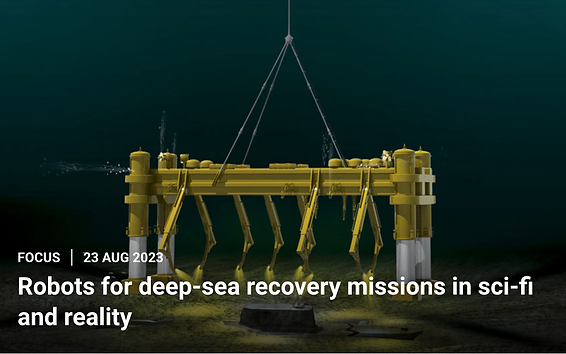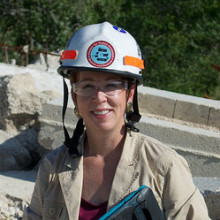
A science fiction/science truth evaluation of Three Miles Down by Harry Turtledove, the fictionalized model of the Hughes Glomar Explorer expedition 50 years earlier than the OceanGate Titan tragedy.
My new science fiction/science fact article for Science Robotics is out on why deep ocean robotics is difficult. Particularly when making an attempt to deliver up a sunken submarine 3 miles underwater, which the CIA really did in 1974. It’s even tougher if you happen to’re making an attempt to deliver up an alien spaceship- which is the plot of Harry Turtledove’s new sci-fi novel Three Miles Below. It’s a pleasant Forrest Gump model of that 1974 Hughes Glomar Explorer expedition. Although the expedition was 50 years earlier than the OceanGate Titan tragedy, the identical challenges exist for as we speak’s robots. The robotics science within the guide could be very actual, the aliens, not a lot.
In 1974, the CIA deployed a 3 mile lengthy, 6 million pound robotic manipulator to get well a Russian submarine. The quilt story was that Howard Hughes was deep sea mining for manganese nodules- which unintentionally began everybody else investing in deep sea mining.
The Glomar Explorer was additionally a breakthrough in laptop management, because the ship needed to keep on station and transfer the arm to the sub within the presence of wind, waves, and currents. All with an array of 16-bit microprocessor, 5MHz clock, 32K phrases of core reminiscence Honeywell computer systems. Think about {that a} late mannequin iPhone makes use of a 64-bit microprocessor, a 3GHz clock, 6GB of RAM and a GPU.
Turtledove takes one main liberty with the in any other case onerous science retrospective: the CIA recovering the Soviet sub was in flip a canopy story masking the true mission to salvage the alien house ship that apparently collided with the sub!
The dry humor and a focus to scientific particulars makes for an entertaining sci-fi compare-and-contrast between deep sea robotics and computer systems within the Nineteen Seventies and the current day. It’s a enjoyable read- not only for roboticists and laptop scientists.
For additional robotics science studying:
For additional scifi studying, take a look at:
Robin Murphy
is a Raytheon Professor of Laptop Science and Engineering at Texas A&M College and Vice-President of the not-for-profit Heart for Robotic-Assisted Search and Rescue

Robin Murphy
is a Raytheon Professor of Laptop Science and Engineering at Texas A&M College and Vice-President of the not-for-profit Heart for Robotic-Assisted Search and Rescue
Source link
#Robots #deepsea #restoration #missions #scifi #actuality
Unlock the potential of cutting-edge AI options with our complete choices. As a number one supplier within the AI panorama, we harness the facility of synthetic intelligence to revolutionize industries. From machine studying and knowledge analytics to pure language processing and laptop imaginative and prescient, our AI options are designed to reinforce effectivity and drive innovation. Discover the limitless prospects of AI-driven insights and automation that propel your corporation ahead. With a dedication to staying on the forefront of the quickly evolving AI market, we ship tailor-made options that meet your particular wants. Be part of us on the forefront of technological development, and let AI redefine the best way you use and reach a aggressive panorama. Embrace the longer term with AI excellence, the place prospects are limitless, and competitors is surpassed.






























